Abstract
The levels of endogenous gibberellin A1 (GA1), GA3, GA4, GA9, and a cellulase hydrolyzable GA9 conjugate in needles and shoot stems of mature grafts of Sitka spruce (Picea sitchensis [Bong.] Carr.) grown under environmental conditions that were either inductive, hot, and dry, or noninductive, cool, and wet, for flowering, were estimated by combined gas chromatography-mass spectrometry selected ion monitoring using deuterated [2H2]GA1, GA3, GA4, and GA9 as internal standards. The samples were taken when the shoots had elongated about 30, 70, and 95% of the final shoot length and 17 days after elongation had terminated. The concentration of putative GA9-conjugate, estimated by GCSIM of GA9 after cellulase hydrolysis of the highly water soluble fraction, was 33 nanograms per gram fresh weight in the needles of both heat and drought- and cool and wet-treated plants sampled just after bud burst. The concentration gradually decreased to a final value of 13 nanograms per gram fresh weight in the heat and drought-treated grafts and 6 nanograms per gram fresh weight in the cool and wet-treated grafts. The stems contained no detectable putative GA9 conjugate. Free GA9 was highest in heat and drought-treated material. For plants subjected to this treatment, GA9 increased from 22 to 32 nanograms per gram fresh weight in needles and from 1 to 22 nanograms per gram fresh weight in stems during the rapid stem elongation phase. By day 17, after cessation of shoot elongation, GA9 had decreased to 12 nanograms per gram fresh weight in needles and 9 nanograms per gram fresh weight in the shoot stems. The cool and wet-treated material also showed an increase in GA9 concentration during shoot elongation. However, the concentration was not as high and was also delayed compared with heat and drought-treated material. By day 17, after cessation of shoot elongation, GA9 concentration was 9 nanograms per gram fresh weight in needles and 5 nanograms per gram fresh weight in stems for cool and wet treatment plants. The concentration of GA4 was very low in tissue from both treatments. Fluctuation in concentration of the more polar gibberellins, GA1 and GA3, showed the same pattern as fluctuations in the content of GA9. However, the heat and drought-treated material had lower amounts of GA1 and GA3 during the later phases of shoot elongation, than the cool and wet-treated material. These results imply differential metabolism between clones treated with conditions inductive and noninductive for flowering. Higher concentrations of putative GA9 conjugate and free GA9 in the hot and dry treatment indicate a higher capacity of synthesizing, for flowering, the physiologically important GA4 in the heat and drought-treated material. This synthesis does not, however, result in a buildup of the GA4 pool, probably because of a high turnover rate of GA4. The cool and wet-treated material had higher amounts of GA1 and GA3, indicating that the differentiation was preferentially directed toward vegetative growth.
Full text
PDF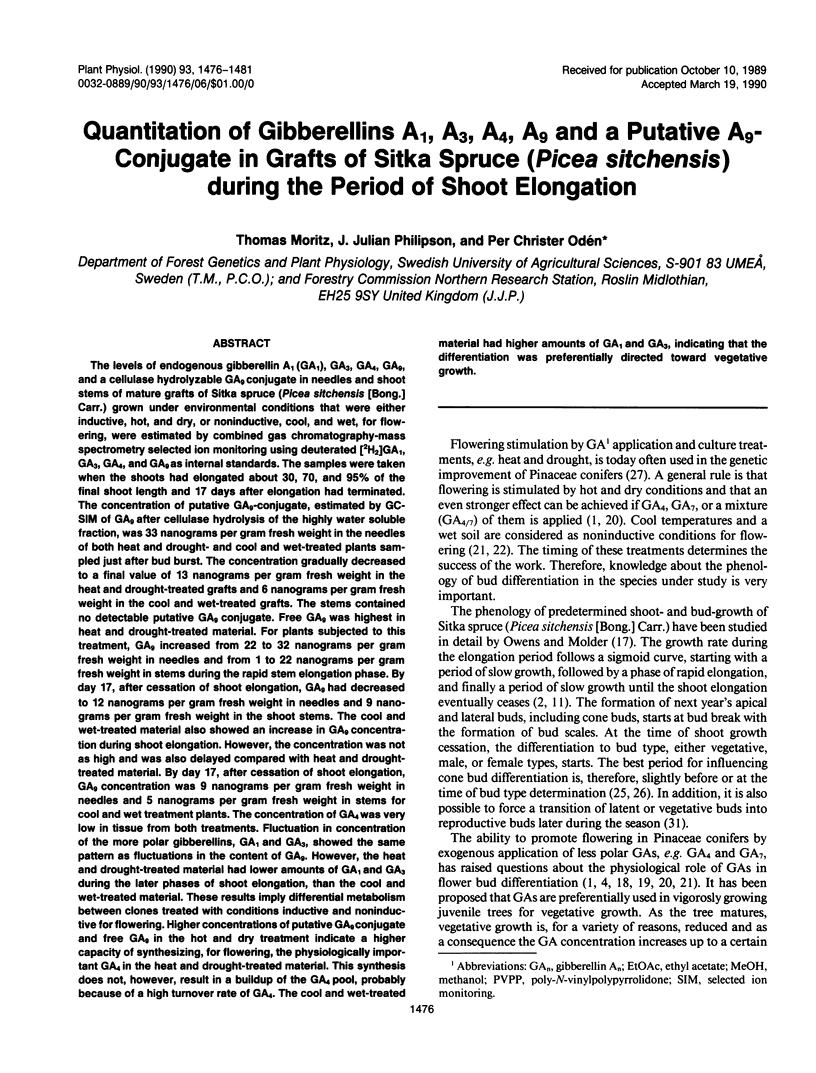
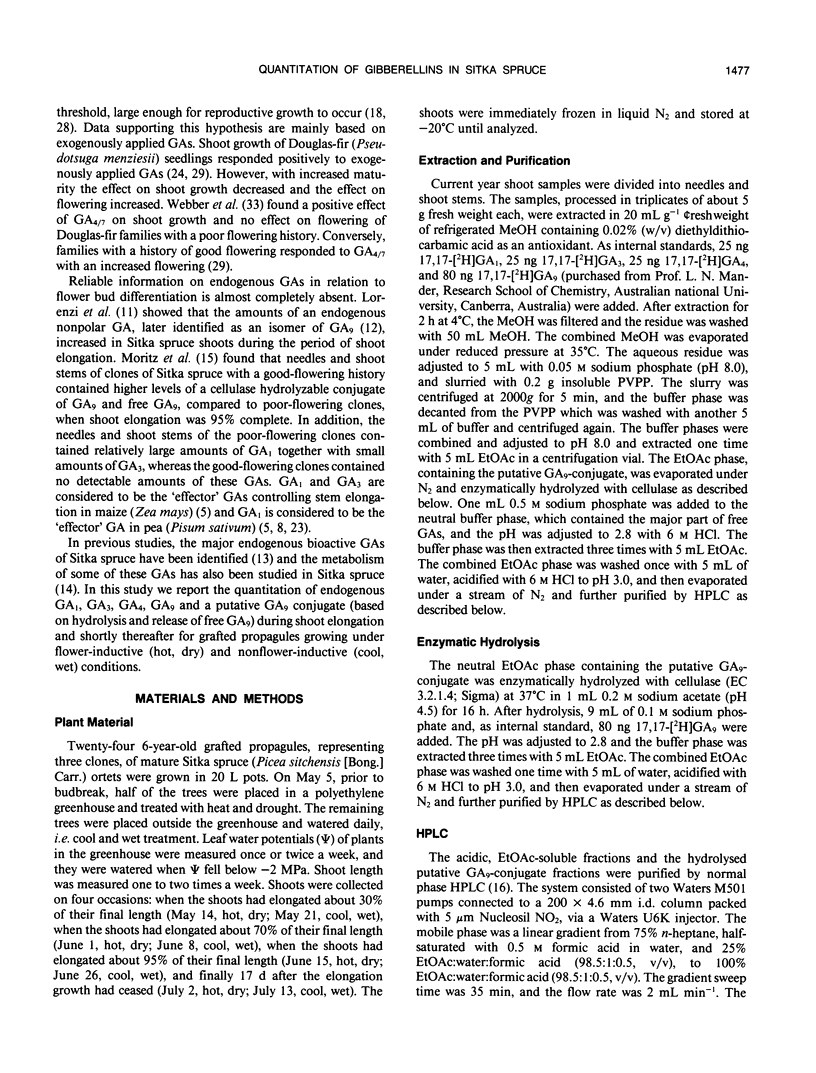
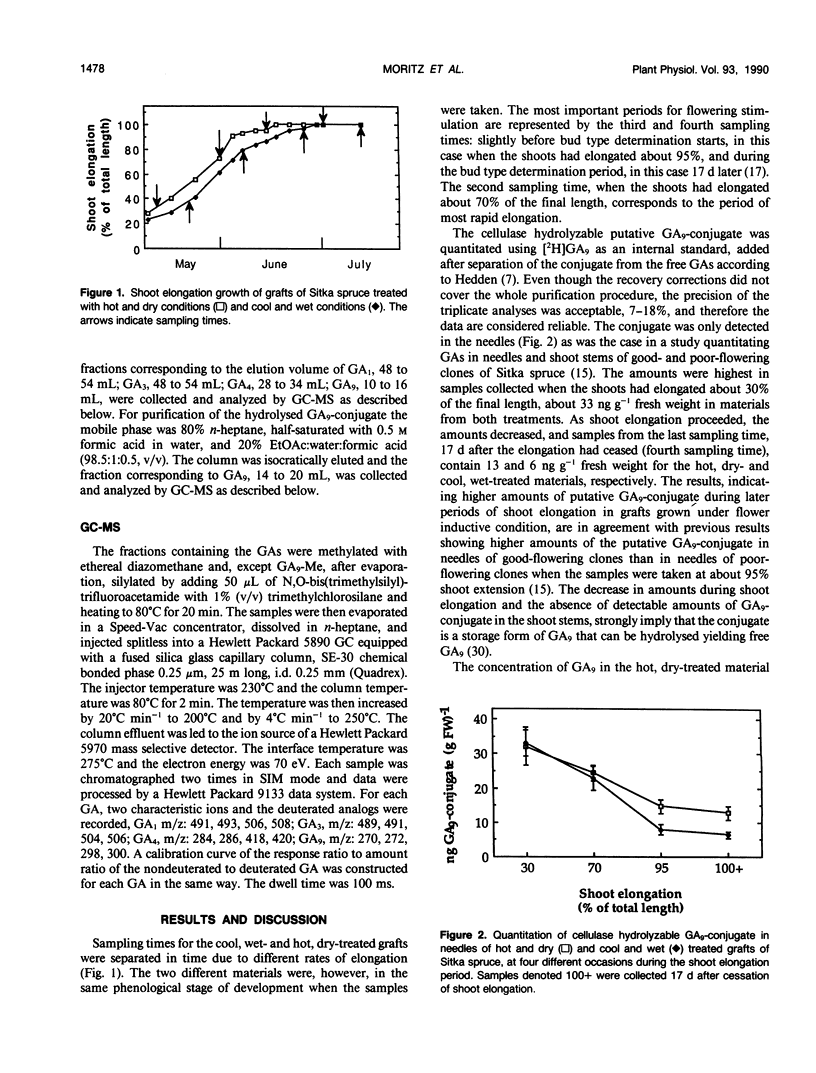
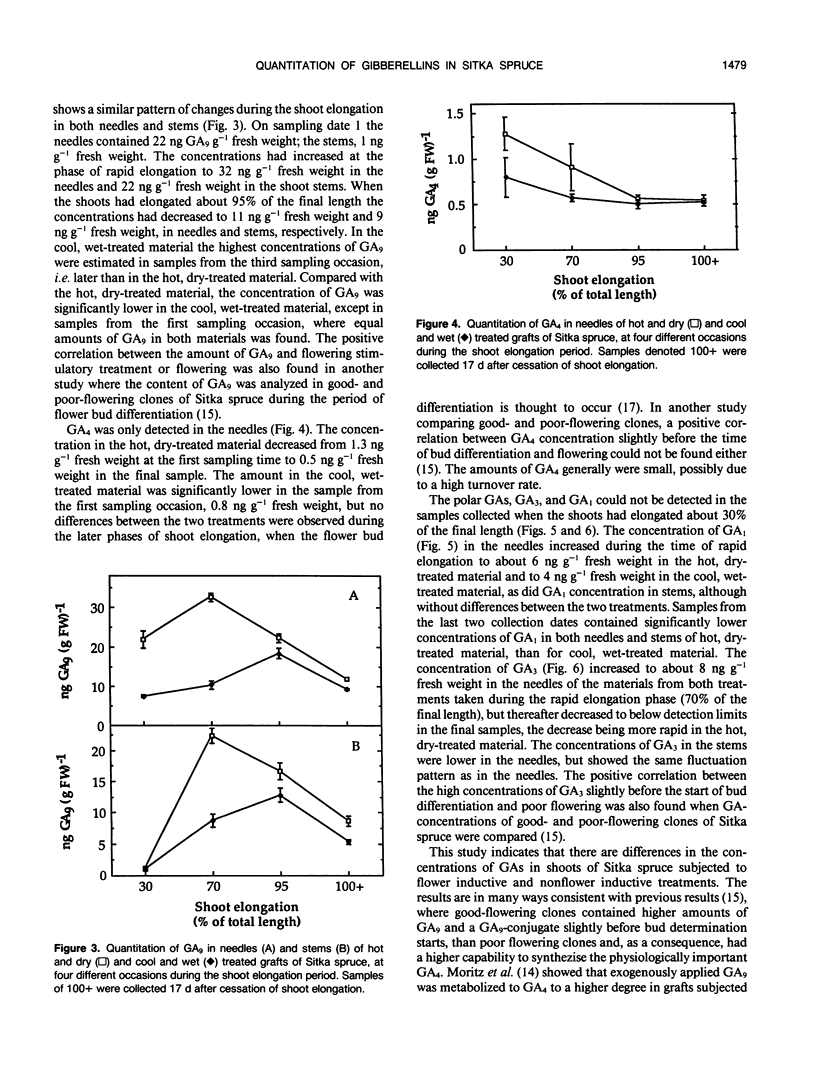
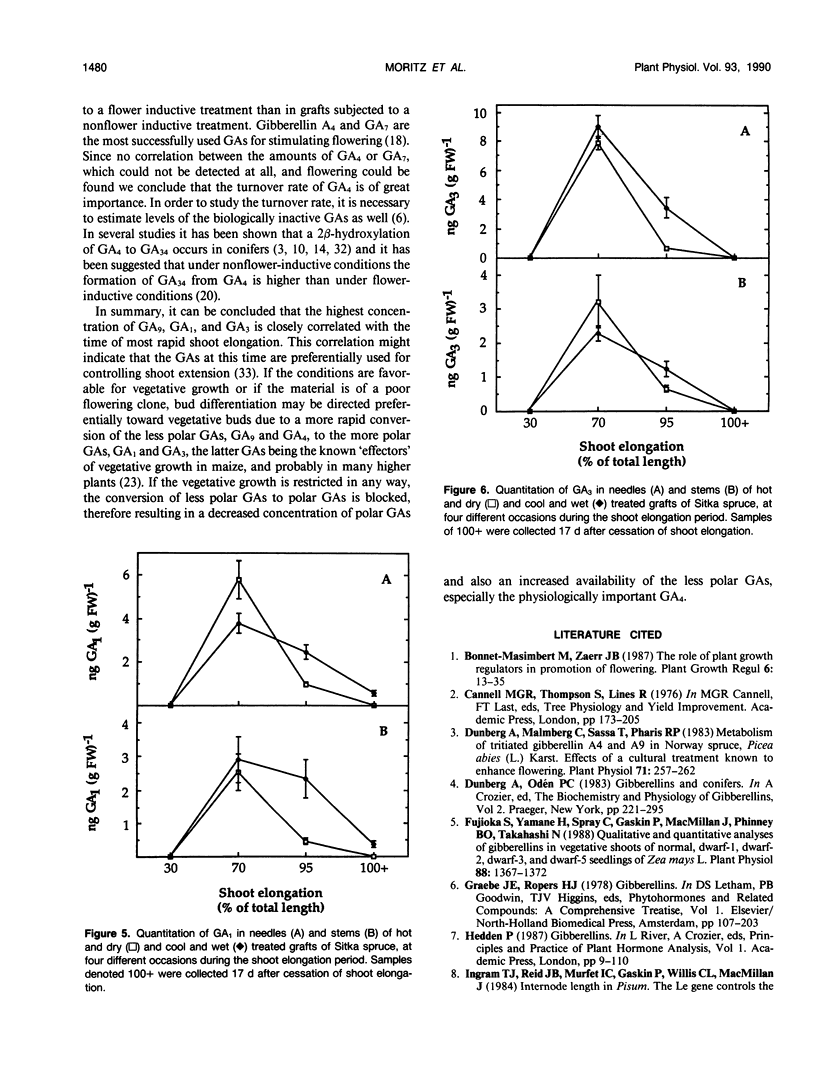
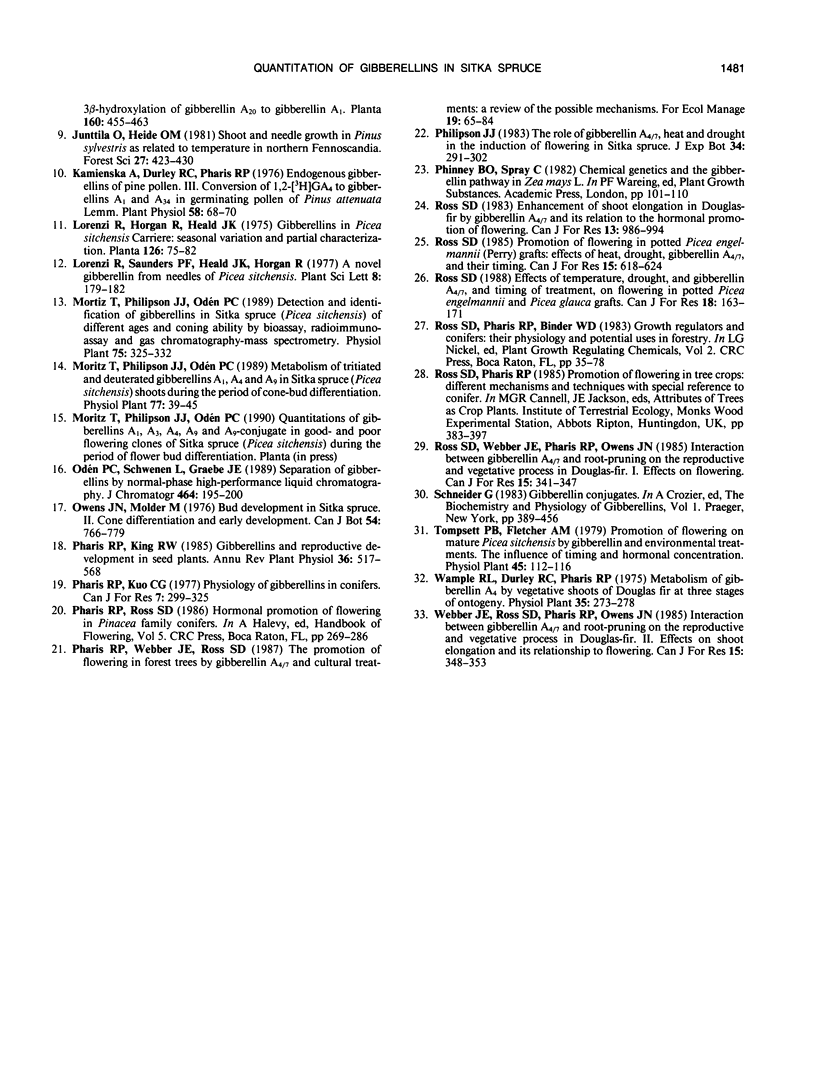
Selected References
These references are in PubMed. This may not be the complete list of references from this article.
- Dunberg A., Malmberg G., Sassa T., Pharis R. P. Metabolism of Tritiated Gibberellins A(4) and A(9) in Norway Spruce, Picea abies (L.) Karst. : Effects of a Cultural Treatment Known to Enhance Flowering. Plant Physiol. 1983 Feb;71(2):257–262. doi: 10.1104/pp.71.2.257. [DOI] [PMC free article] [PubMed] [Google Scholar]
- Fujioka S., Yamane H., Spray C. R., Gaskin P., Macmillan J., Phinney B. O., Takahashi N. Qualitative and Quantitative Analyses of Gibberellins in Vegetative Shoots of Normal, dwarf-1, dwarf-2, dwarf-3, and dwarf-5 Seedlings of Zea mays L. Plant Physiol. 1988 Dec;88(4):1367–1372. doi: 10.1104/pp.88.4.1367. [DOI] [PMC free article] [PubMed] [Google Scholar]
- Kamienska A., Durley R. C., Pharis R. P. Endogenous Gibberellins of Pine Pollen: III. Conversion of 1,2-[H]GA(4) to Gibberellins A(1) and A(34) in Germinating Pollen of Pinus attenuata Lemm. Plant Physiol. 1976 Jul;58(1):68–70. doi: 10.1104/pp.58.1.68. [DOI] [PMC free article] [PubMed] [Google Scholar]


